This week we are inside the wonderful tale of the Elves and the Shoemaker. I love teaching the children how to draw an elf. It is easy and the results endearing! I am including my state standards at the bottom of this post that this activity directly addresses. This activity is reinforces the understanding of shapes, size and positional words. Materials you will need are: Sharpie pens, white card stock and watercolor paints.
- Identify, name, and describe a variety of basic two-dimensional geometric shapes such as squares, triangles, circles, rectangles, (regular) hexagons, and (isosceles) trapezoids presented in a variety of ways (e.g. with different sizes of orientation).
- Model and use words indicating relative position or direction (e.g., students describe the relationships between self and objects in space using on, above, below, beside, under, on top of, behind, and over).
ART:
Standard 3: Visual Art Expression – The student will observe, select, and utilize a variety of ideas and subject matter in creating original works of visual art.
1. Manipulate a variety of materials (media).
THE MULTIPLE INTELLIGENCES:
Visual-Spatial, Body-Kinesthetic, Intrapersonal
BLOOM'S TAXONOMY: Remembering, Understanding, Applying, Analyzing, Creating
WILLIAM'S TAXONOMY: Elaboration


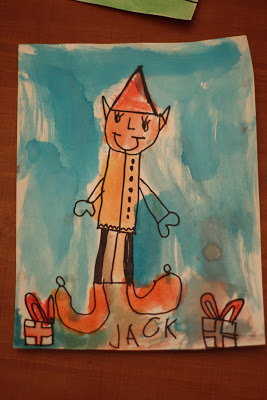

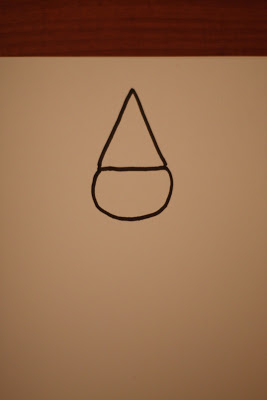
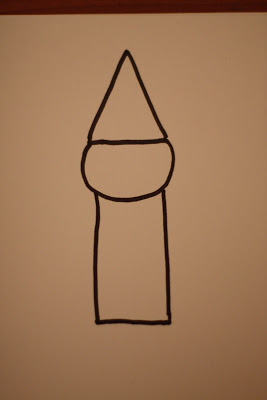
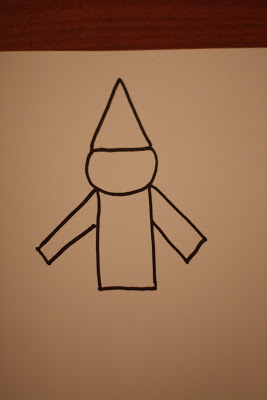
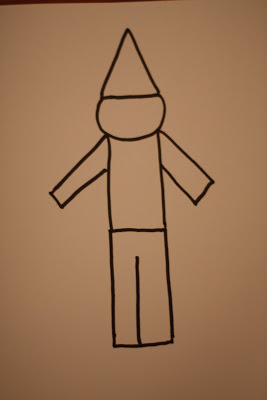
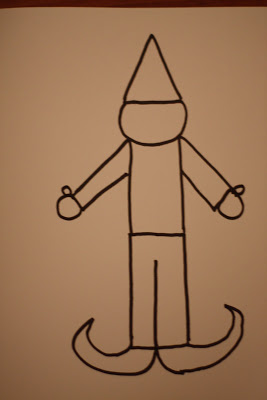
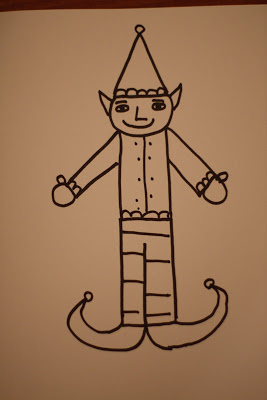
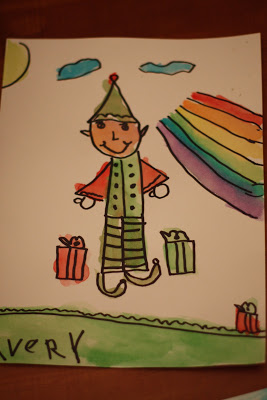
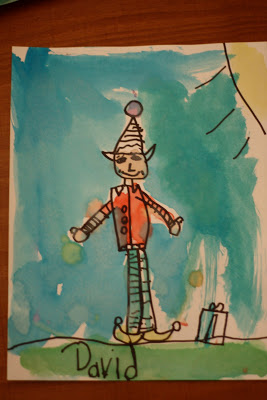
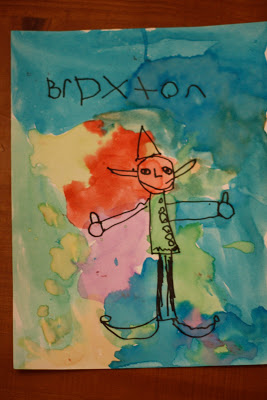


Fantastic! Thanks, we will be drawing elves tomorrow 🙂
Hello Sally,
Thanks a lot for explanations and pattern ; my daughters will love it !
love love these…..Ijust posted Nora’s drawings and made me think I should post the sample as well.
http://mommyactivist.blogspot.com/2010/12/ballet-dancer-drawings-done-by-35-year.html
you are such an inspiration
Miriam
Next week I am posting my Nutcracker pattern. Miriam, I would love to see your ballerina sequence as well. I would like to teach it to my students.